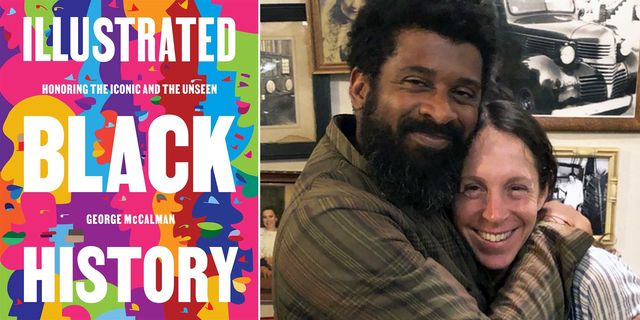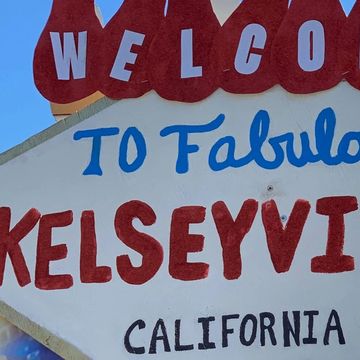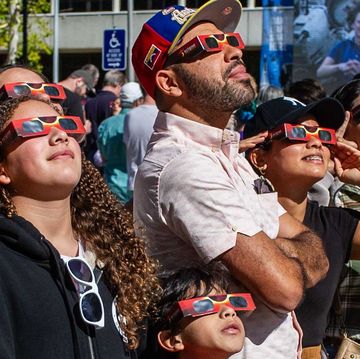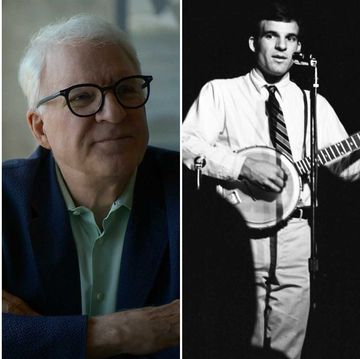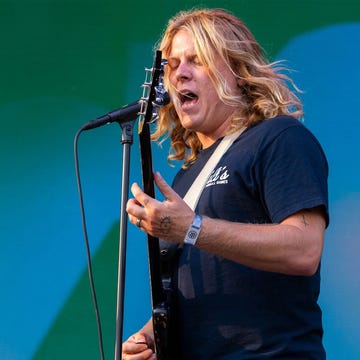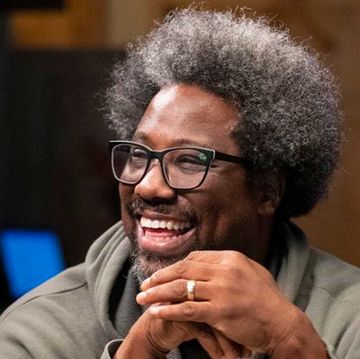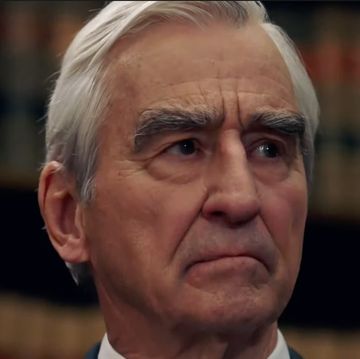Crying in restaurants together is what we do,” George McCalman told me one night, while crying, at one of our go-to restaurants. Then he laughed. Which is another thing we do in restaurants, as loudly as if we were in one of our own living rooms.
That night at Nopa, our second-favorite San Francisco restaurant, George was moving manically between sad tears and laughing tears. We were toasting the first anniversary of his mother’s passing over smoked trout drizzled with herbed yogurt and a nine-hour Bolognese and at least three other dishes, all of which—whether it’s his plate or not—George will ultimately scrape clean. “Doesn’t everyone like to mourn in public?” he joked. Deaths and births, hookups and breakups, hirings and firings, and every major election and minor infraction in between, we’ve covered it all together, over two decades of dinners. “I’ve got some hot gossip,” George will say, before my napkin is even lying in my lap.
George admits it took him a while to realize it, but he is an artist. His first book, Illustrated Black History, is a nearly 400-page ode to some 400 years of America’s “iconic and unseen,” a compendium of 145 pioneers curated and illustrated—embodied, really—by George. Of course he also designed the book and wrote it because George does those things, too. He also writes, illustrates, and designs a monthly column for the San Francisco Chronicle. And makes his friends’ cookbooks look nothing like other cookbooks. My middle-aged man occasionally even models. He can do anything! (Well, except drive.)
I should say right here that I have zero objectivity about George: he’s my brilliant friend, my occasional collaborator, my other husband, as we both call him.
We first met and fell in friend-love by the photocopier at San Francisco magazine, one of several publications George art directed throughout his career. From Entertainment Weekly in late-’90s Manhattan to many of the magazines that have been based in the Bay Area, George has added his name to the otherwise essentially all-white mastheads. Eventually, he ditched the 9-to-5 in favor of the 24-7 to launch his own graphic design studio, McCalman.Co, where he branded everything from tea to Tartine to tech sites to (my personal favorite) business cards that reflected the character of their carriers. Including his own: a bold, bright, ever-fashionable slip of unflappable stock. He still hands them out on occasion, even though no matter what room he enters, he already seems to know everyone in it.
This essay was adapted from the Alta newsletter, delivered every Thursday.
SIGN UP
Illustrated Black History actually started six years ago with a self-assigned challenge: complete a painting a day in honor of Black History Month. On February 1, 2016, he posted a black and white of Edna Lewis, arm bangled, eyes wise, bun coiled. Seventy-two followers, real-life friends all, hearted it. The following day, he shared another inked portrait: Gordon Parks, mustachioed, wrinkled, lonely. His caption quoted the photographer, but he might’ve just as well been quoting himself: “At first I wasn’t sure I had the talent, but I did know I had a fear of failure, and that fear compelled me to fight off anything that might abet it.”
He kept going. Shirley Anita Chisholm (politician), Maurice Ashley (chess master), Claudette Colvin (civil rights activist). Twenty-nine days and paintings later (it was a leap year), he had a small body of work composed of Black faces and Black souls. His friend Rose told him to make a book.
Early attempts were met with flat-out rejections. “It was this white-lady language I was too used to,” he recalled. “‘I’m not sure there’s a market for it’ language.”
Irritated, enraged, convinced, George persisted. He got a smart agent. Made an irresistible proposal. And, in the summer of 2018, my friend had himself a heated auction. He FaceTimed me in real time with the news. I still have the screenshot I snapped of his ensquared face, melting.
It was not smooth sailing from there. There was drama I won’t bore you with. Book drama. Boy drama. There were also world-changing events that made his project harder but even more essential: George Floyd, Breonna Taylor, too many others. There was the pandemic. And his mother’s cancer. Her caretaking and death coincided with his due date.
And yet: He did it. It’s here.
The other day, another meal, this time lunch, George brought the pre-publication galley to show me. We sat on a bench by the Ferry Building and flipped through his work: page after page of paintings I’d previously seen taped to the exposed-wood walls of his Outer Sunset studio where I’d watched my kids stand rapt beneath a larger-than-life Maya Angelou. Now, here she was, “the patron saint of this project,” scanned and resized, not yet printed in the four-color of the final book. Still, so alive. So were Richard Pryor and Nina Simone, James Hemings. (Name not ring a bell? That is, in part, George’s point.) Each portrait is rendered in a style and technique as unique as the individual it portrays. The book feels like an anthology of artists, rather than the work of just one.
George poured his whole beautiful self into his beautiful book. I’m biased. Clearly. (He calls me Mrs. McCalman, after all.) But—like George—I, too, always speak the truth: Illustrated Black History belongs in every library and bookstore, coffee table and classroom in America. I hope you, and your brother, and your barista, and the Obamas, buy it.
Meanwhile, as I write this, George is in book-party-planning mode. “I want it to be intimate,” he said of one of a million events he has lined up. In George-speak, that means oh, just a hundred—or so—of his friends, who are his family, gathering at our first-favorite restaurant: Zuni Café. There will be laughing. And crying. Of the very best kind.•
Rachel Levin is a journalist and author of LOOK BIG: And Other Tips for Surviving Animal Encounters of All Kinds, and co-author of the cookbooks STEAMED: A Cathartic Cookbook for Getting Dinner and Your Feelings on the Table and EAT SOMETHING: A Wise Sons Cookbook for Jews Who Like Food and Food Lovers Who Like Jews.
